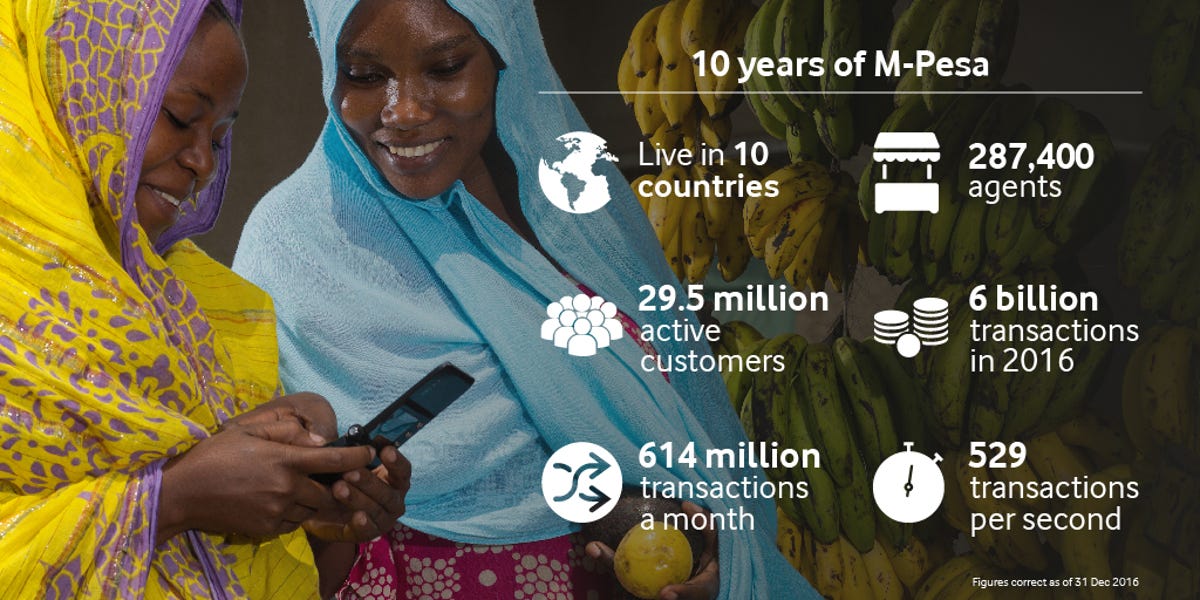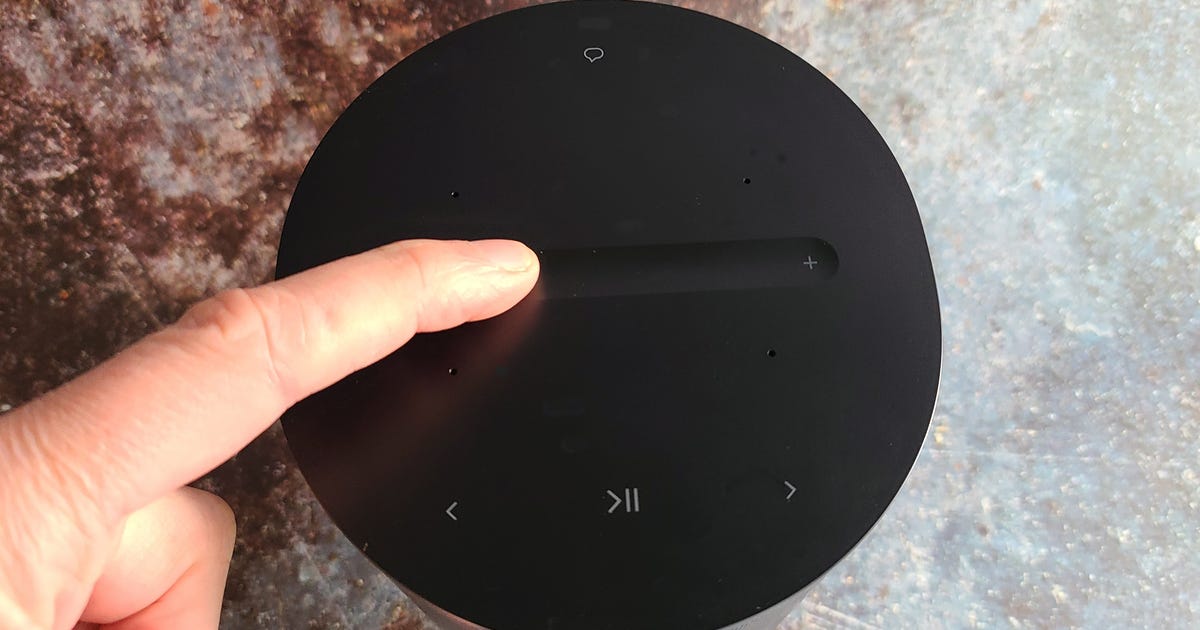Ten years ago on Tuesday, a gutsy Kenyan company launched a mobile money initiative that would change the lives of millions.
Its name is M-Pesa, with “pesa” meaning money in Swahili.
Think mobile money and your mind will probably jump to NFC-powered payment services from Apple, Samsung and Google. M-Pesa predates all of those and launched before the smartphones they rely on. Four months before Apple’s first-generation iPhone went on sale in 2007, Kenyan carrier Safaricom enabled person-to-person mobile payments in the country via M-Pesa.
M-Pesa allows people to store money in a secure digital account and transfer it using their phones, even letting them pay bills and send funds abroad. Authorized agents will swap cash for electronic money and can do the same in reverse. The service is primarily powered by text messages, although an app is also now available for the small number of smartphone users.
A decade after its launch, M-Pesa has expanded to 10 countries, boasts 29.5 million active users and processes up to 614 million transactions per month.
The Western world is catching up, but we’re taking our sweet time. Mobile payments in the US and Europe still aren’t mainstream, with most people preferring physical charge cards or paper money. But this is set to change, according to research firm Forrester. By 2021 mobile payments will have tripled in the US to $282.9 billion and will grow 23 percent in Europe too.


Global competitors like Apple, Google and Samsung are on their way, but M-Pesa has a solid head start.
Vodafone
M-Pesa, meanwhile, is already used in 96 percent of households in Kenya. That’s the kind of market penetration most tech companies can only dream of. It has made M-Pesa the de facto example people use when suggesting Africa can “leapfrog” iterative tech development and put itself at the front of the pack.
“We needed to be revolutionary in order to be successful,” said Michael Joseph, founding CEO of Safaricom and now the director of mobile money for Vodafone, in an interview. “If we applied western standards to all of the things we do, we would probably still be in the dark ages in Africa.”
Helping the unbanked
As impressive as those stats and milestones are, it’s the way M-Pesa has transformed people’s lives and created a startup ecosystem in Kenya that cemented the service’s reputation. It’s also what Joseph is most proud of.
For many M-Pesa users, the service isn’t just a debit card equivalent, it’s their bank. Not long ago, banks and savings accounts were only for wealthy and middle-class Kenyans. In 2009, M-Pesa savings accounts were introduced and within three months 14 million accounts were set up.
An MIT study published last year estimated that M-Pesa is responsible for lifting two percent of households in Kenya out of poverty. That’s equivalent to 194,000 families who now no longer live below the poverty threshold on less than $1.25 per day.
Running alongside M-Pesa are nonprofit campaigns, including a number around women’s health. In Kenya, for example, expectant mothers are encouraged to save a small amount for health insurance in a dedicated M-Pesa account, which allows them to give birth in a clinic rather than at home. These projects vary region by region, as well as by country, depending on the given needs of the local people.
From Kenya to India
Key to launching in different markets, said Joseph, was learning how M-Pesa could most benefit local customers and operate within each countries’ financial regulations.
In Kenya, for example, the initial six-month trial period was supposed to establish the appetite for microfinancing businesses. Instead, it helped Safaricom uncover what Kenyans wanted most from mobile money: an easy way to send funds home from urban to rural areas. When the service launched in Mozambique, it was the ability to pay utility bills that drove adoption among consumers.
It’s India that is proving most tricky, said Joseph. Just like Kenya, people want to be able to send money home to their families. But instead of embracing tech, many people still prefer to physically pass money between family members as they have done for hundreds of years. M-Pesa is the market leader in India, but faces stiff competition from a number of other companies.
Gaining trust and viral success
This tailored approach requires the kind of patience that big multinational tech companies don’t often exhibit, said Joseph, who has spent time analyzing the global mobile payments market as a World Bank Fellow.
“In Africa we tend to be much more innovative because we need to be, and we’re kind of far from everywhere,” said Joseph. “Nobody comes there to look and see what you’re doing.” As such, Safaricom could spend three to four years turning M-Pesa into a profitable business — something Joseph hadn’t even considered when he first set the project up.


A man sends money through M-Pesa using a simple feature phone.
TONY KARUMBA/AFP/Getty Images
“When we launched it, this was another innovation. It wasn’t going to be an invention that would change the world,” he said. “Nobody knew how successful it would become, and how it would change people’s lives. But it has taken off and gotten a life of its own.”
It’s not just patience, though. Joseph attributes the success of M-Pesa to many different factors — the culture of innovation within Safaricom, the Kenyan banking regulators and the country’s spirit of entrepreneurialism, to name a few.
There is also trust. Joseph said this is gained by ensuring M-Pesa’s tech is the best, no money is ever lost and that the customer is always protected. ” I always say to the team, you can’t have a dropped call with mobile money,” he said.
Joseph recognizes that global competitors like Apple, Google and Samsung are on their way, but he doesn’t seem too worried at this point.
“I still think that we know what we’re doing at the base of the pyramid,” he said, referring to M-Pesa’s wide customer base. “We offer financial services to the poor, not just payments. We are trusted which is really, really important. And people like the penetration of M-Pesa. Everybody uses it. It’s a viral success.”
Life, disrupted: In Europe, millions of refugees are still searching for a safe place to settle. Tech should be part of the solution. But is it?
Tech Enabled: CNET chronicles tech’s role in providing new kinds of accessibility.







